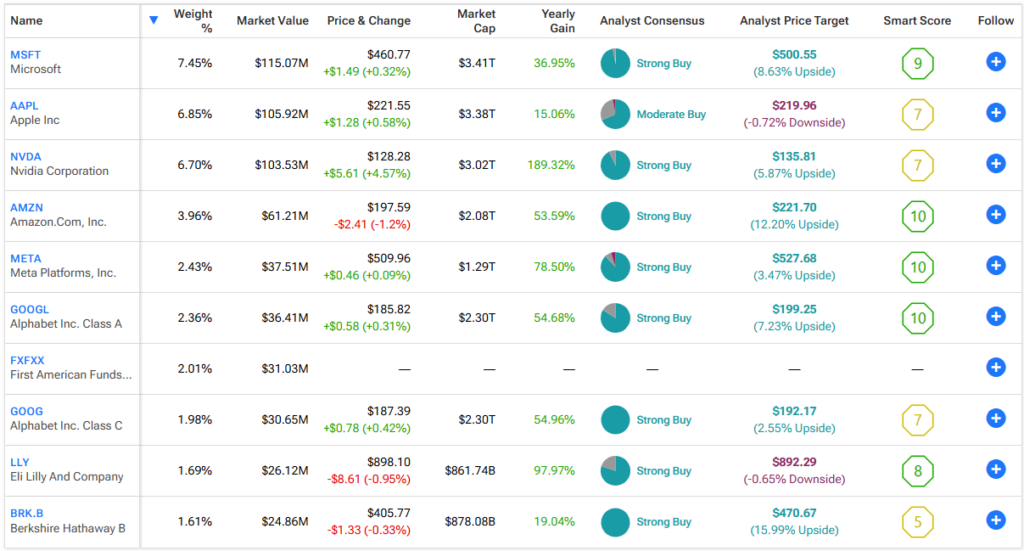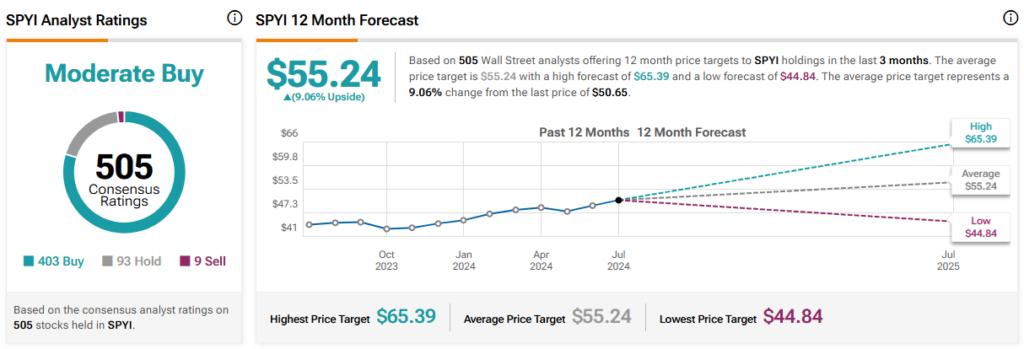What’s better than getting paid a dividend every quarter? How about getting paid one every month? That’s exactly what the NEOS S&P 500 High Income ETF (BATS:SPYI) has to offer investors, and it also comes with a massive dividend yield.
Claim 70% Off TipRanks This Holiday Season
- Unlock hedge fund-level data and powerful investing tools for smarter, sharper decisions
- Stay ahead of the market with the latest news and analysis and maximize your portfolio's potential
I’m bullish on this new monthly dividend ETF from NEOS based on this attractive payout schedule and its show-stopping 11.6% dividend yield, which is an incredible nine times higher than the yield of the S&P 500 (SPX).
What Is the SPYI ETF’s Strategy?
According to fund sponsor NEOS, SPYI “seeks to distribute high monthly income generated from investing in the constituents of the S&P 500 Index and implementing a data-driven call option strategy.”
The fund “utilizes a call option strategy that may include both sold and purchased SPX index options, which may provide the opportunity for upside capture in rising equity markets.”
Essentially, SPYI owns the stocks in the S&P 500. It then generates monthly income for its holders through both the dividend payments from these stocks and by selling call options on the S&P 500 to generate additional income via the premiums from these options contracts.
While this generates a high level of monthly income, investors should also note that by utilizing this strategy, they are potentially sacrificing some level of upside from capital appreciation. If SPYI’s holding rises above the strike price for the covered call contracts it sells to generate this income, SPYI will forgo much of this additional upside.
You can see this dynamic in play by looking at the ETF’s results. For example, in 2023, SPYI generated a total return (which includes price appreciation and dividends) of 18.1% for the year. While this was a strong return, it underperformed the S&P 500’s return of 26.3% for the year.
However, there’s one thing that SPYI does a bit differently from other ETFs employing this covered call strategy. Rather than investing all of the money it receives from selling call contracts, it has the option to reinvest some of the proceeds back into buying cheaper, further out of the money call options, allowing it to participate in some of this upside if the underlying holding goes beyond the strike price.
As NEOS explains in the fund’s summary prospectus, the fund seeks to use the S&P 500 call options “to generate a net-credit, meaning that the premium received from the sale of the call options will be greater than the cost of buying the long, out-of-the-money SPX call options.”
Incredible Dividend
While the strategy is complex and has some pros and cons regarding capital appreciation and total return, there’s no denying that it’s a powerful way to generate significant income. This is evidenced by SPYI’s mouth-watering 11.6% dividend yield, which is about nine times higher than that of the S&P 500 (currently yielding just 1.3%).
Not only that, but SPYI’s yield is easily more than double the 4.35% yield offered by 10-year treasury bonds, making SPYI a compelling income investment no matter what type of interest rate environment we find ourselves in.
ETFs employing this strategy have grown in popularity in recent years, and it’s worth noting that SPYI also features a higher yield than many of these. For example, the JPMorgan Equity Premium Income ETF (NYSEARCA:JEPI), the largest and most well-known of these ETFs, features a 7.4% yield, and the JPMorgan Nasdaq Equity Premium ETF (NASDAQ:JEPQ) yields 8.8%. These are both impressive yields, but SPYI’s is significantly higher.
It’s important to note that the level of SPYI’s dividend payout is not set in stone, and the amount can vary from month to month. However, the payouts have been relatively consistent, ranging between $0.47 and $0.50 per month over the past year. Additionally, since its launch in August of 2022, SPYI has paid distributions every month, so it is beginning to build up a strong track record of monthly dividend payments.
SPYI’s Holdings
SPYI offers strong diversification, with 508 holdings. Its top 10 holdings make up a reasonable 38% of the fund. Below, you’ll find an overview of SPYI’s top 10 holdings using TipRanks’ holdings tool.

Given the fund’s strategy of investing in the constituents of the S&P 500 index, its top holdings unsurprisingly largely mirror those of the broad market index. Its holdings include household names like Microsoft (NASDAQ:MSFT), Apple (NASDAQ:AAPL), Nvidia (NASDAQ:NVDA), Amazon (NASDAQ:AMZN), and Meta Platforms (NASDAQ:META).
Steep Expense Ratio
One negative aspect of SPYI is that it features a fairly high expense ratio of 0.68%. This means that an investor in the fund will pay $68 on a $10,000 investment over the course of the year. Assuming that the fund returns 5% per year going forward and maintains this current expense ratio, this investor will pay $379 in fees over a five-year time horizon, a fairly steep total.
That said, this is a complex, actively-managed ETF, so it is understandable that it has a higher expense ratio than the typical index fund. As long as the ETF keeps paying out large dividends like clockwork each month, most holders will feel comfortable with the above-average expense ratio.
Is SPYI Stock a Buy, According to Analysts?
Turning to Wall Street, SPYI earns a Moderate Buy consensus rating based on 403 Buys, 93 Holds, and nine Sell ratings assigned in the past three months. The average SPYI stock price target of $55.24 implies 9.06% upside potential from current levels.

The Takeaway: A Strong Option for Income Investors
Investors should be aware that investing in call options ETFs like SPYI might limit potential capital appreciation. However, with a remarkable yield of 11.6%, it’s hard not to like this ETF anyway. I’m bullish on SPYI as a great option for income investors based on its attractive monthly payout schedule and its massive 11.6% dividend yield. As one part of a balanced portfolio, this is an effective tool for generating frequent, above-average income on a steady basis.
















